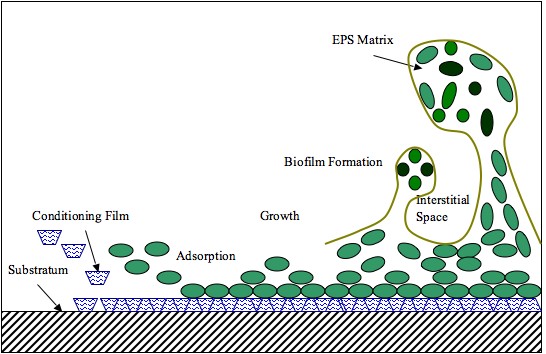More and more evidence is linking cancers with persistent bacterial infections, as noted in a new study published in the Lancet Oncology Journal. I learned long ago during my interviews with biofilm researchers that gene transfer is accelerated within biofilm communities, increasing the likelihood of antibiotic resistance, mutations and other cellular activities that favor microbial adaptation – often at the expense of the human host.
I am no evolutionary biologist (I interviewed several), but it seems to me the rate of microbial evolution is increasing. And might this evolutionary rate correlate to the explosion of cancers? Diabetes? Other human ailments? Here’s a few excerpts from my interview with Dr. Bill Costerton, the “father” of biofilms.
___________________
Richard Longland: In your opinion, is there any relationship between pathogenic biofilms in the human host and some challenging medical conditions? Two totally different conditions come to mind: cancers and diabetes.
Dr. Bill Costerton: the cancer parallel is very acute in that the cancer parallel can be very well drawn. And it is just this…When you have a cancer, you have a body of the cancer and you have metastasis. That is, little pieces of the cancer will go somewhere else and start to grow. And this is exactly the problem we have with biofilm infections. For example, if you have a biofilm endocarditis, it can seed into your lungs, it can seed into your brain, and it can produce all kinds of little biofilms that jam in your capillary beds and cause stroke and cause pneumonia in the lungs and so basically a biofilm infection is something that is seeded somewhere; just like a cancer and if the cancer metastasizes to a different area the biofilm also spreads to different areas and we can have a strategy that stops that spread. And in fact, you use antibiotics to stop single bacteria from migrating somewhere and setting up a new biofilm. So, exact parallel between biofilms and cancer.
And with diabetes we have a real problem because diabetes compromises all kinds of normal functions and makes tissue very comfortable for biofilms. That’s why they get diabetic foot ulcers, for example. We have a change in physiology, biofilms get established in this compromised tissue and then, of course, they have to be removed and antibiotic countermeasures have to be taken. So, there is a real strong connection between both cancer and diabetes and biofilms.
Richard Longland: Is there a causal relationship between pathogenic biofilms and cancers, or is that just too tenuous at this time?
Dr. Bill Costerton: Well, no it isn’t too tenuous at all, actually Rich, it is really rather interesting. Bacteria when they are growing somewhere in a biofilm are lasting longer in contact with the tissues than we like to happen. In the old days, you know you were cured in a week or you were finished. So, basically, the bacteria were only in contact with the tissues for a short time. But we know now that there are cancers associated with various things that happen in the prostate.
So if we know that something is happening in the liver, Clonorchis infection is a case in point, and bacteria get started there, we know that the irritation that the bacteria cause can cause cancer directly. So in at least two instances having a bunch of bacteria where they shouldn’t be, in contact with the human tissue in the liver in one case and in the prostate in the other case, they are like an irritant and irritants cause cancer by causing the mutation in the first place. So two direct links to cancer so far, and I think many more to come. You don’t want a bunch of bacteria hanging around in tissue for a long period of time producing strange chemicals, including carcinogenic chemicals. So, it’s important, very important that we clear out biofilm infections.

See 15 minutes of the 45 minute interview with Dr. Bill Costerton here.
